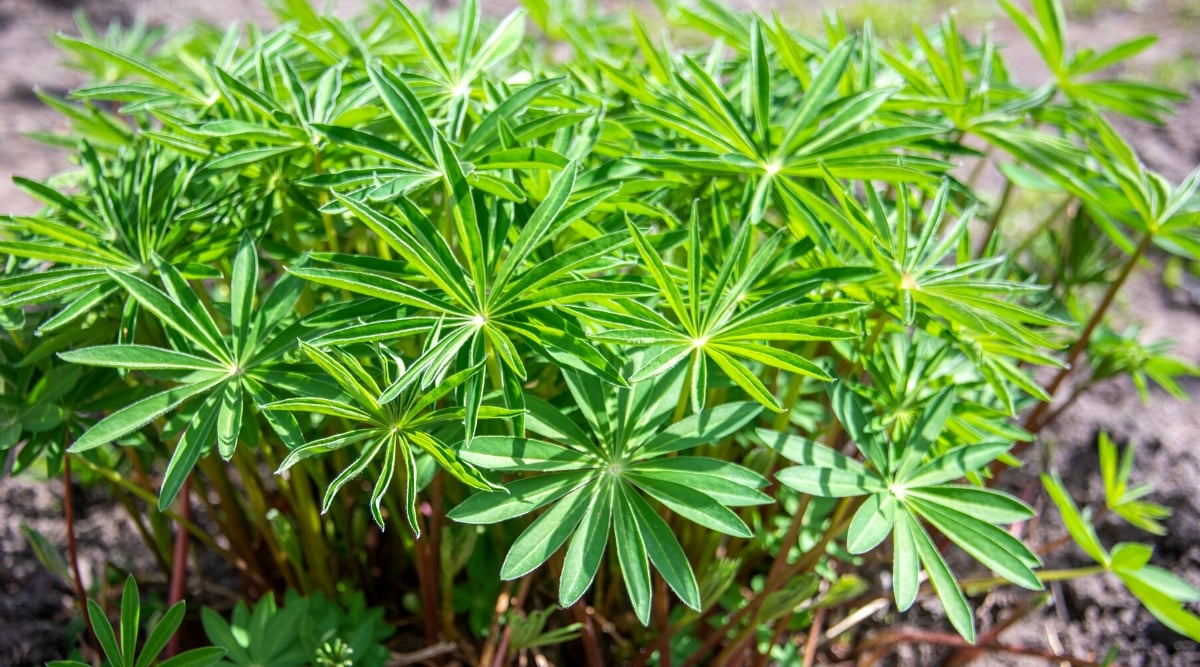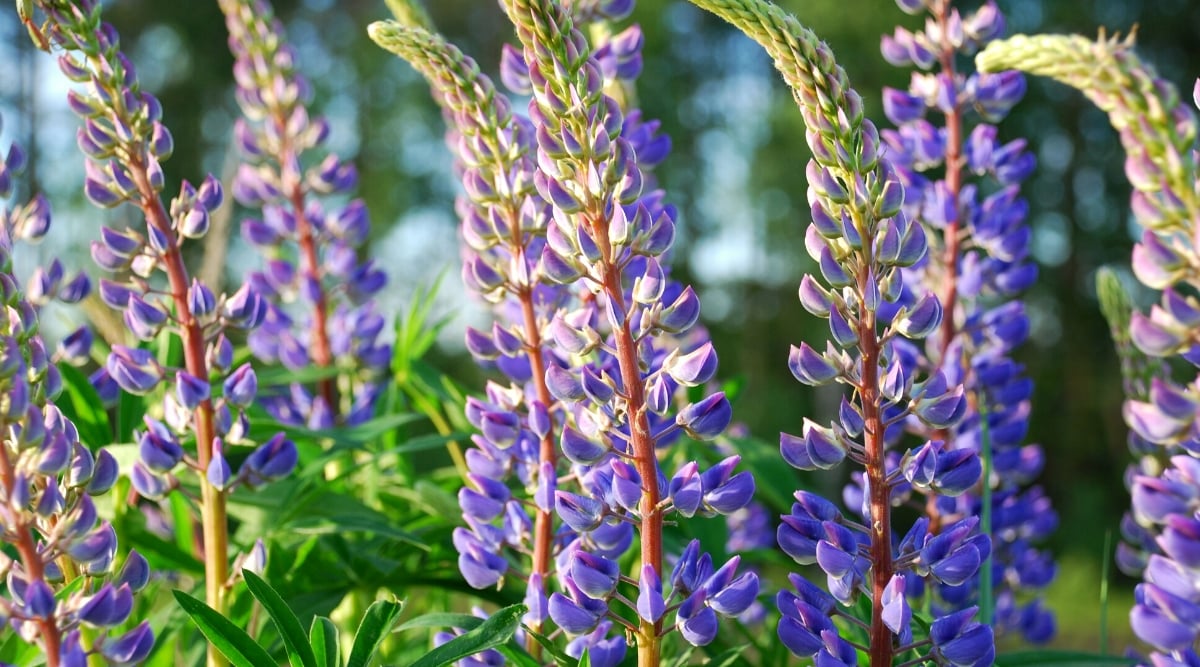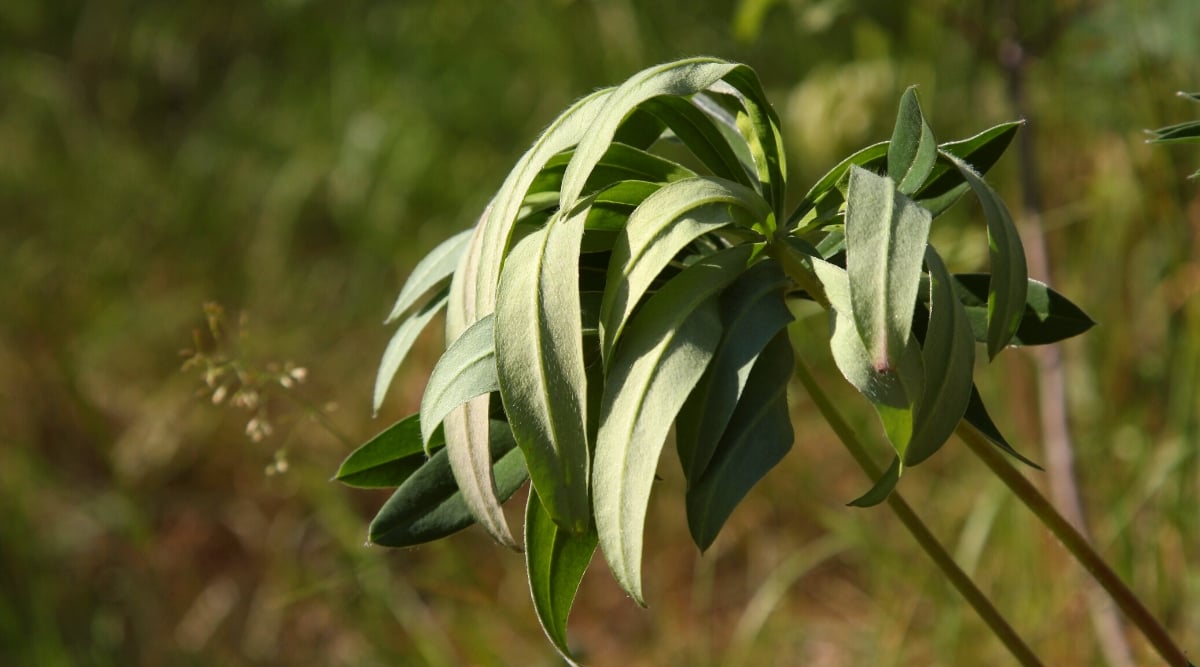Lupine flowers (Lupinus spp.) are notorious for thriving in locations where they are not wanted while performing poorly in locations where they are intentionally planted. Many of us who’ve attempted to grow this perplexing perennial in our backyard gardens have had ups and downs with the genus, making us more determined to fix the problems and get it right.
As members of the pea family (Fabaceae), lupines have a distinct flower profile and a rigid, upright habit. They vary in height from 1 to 7 feet and come in various colors, including pink, purple, blue, white, yellow, and red. Leaves are palmate (like a hand) and radiate outward from strong stems.
Lupines exist as both annual and perennial species. You’ll see them on roadsides and coastal bluffs as wildflowers but also in ornamental gardens and containers. Hardiness varies within the genus, but the majority can be grown between zones 4 and 9. They spread liberally by seed and are considered a nuisance plant in some regions.
In the interest of helping our fellow gardeners get a handle on the Lupinus genus and all of its quirks, we’ve compiled a list of 13 issues you might face when trying to grow this elusive beauty. Read on for a closer look at some of the problems that plague lupine flowers and a few helpful hints for working through them.
Toxicity
Lupines contain toxic alkaloids harmful to humans, animals, and livestock when consumed.
This lupine problem is the most significant, depending on your garden’s setting and who visits it. Lupines contain alkaloid chemicals that are poisonous to both humans and animals. The chemical is most concentrated in the seeds produced late in the season, but it can also be present in early spring growth. While these plant parts do not typically cause skin reactions, they can be dangerous if eaten.
Due to their bitter, unpleasant taste, lupines are not usually consumed by adults or children in quantities large enough to cause serious harm. If they are accidentally ingested, Lupinin alkaloids may cause mild gastrointestinal upset, but we’d have to eat large amounts to experience any real threat.
On the other hand, the danger to wild animals and livestock is rather severe. As aggressive grazers, cattle, sheep, and horses are less discriminatory. They will keep chowing down even if the taste is bitter. Since lupine is known to cause severe birth defects and death in animals that have consumed large quantities, care should be taken to prevent it from spreading into a grazing area.
As a member of the legume family, lupines may also cause anaphylactic reactions in people with peanut allergies. It can be an unexpected and life-threatening trigger since it is sometimes rolled up with other grains and plant materials to create hay at the end of the season.
The Fix
Preventing a lupine-related toxic event requires diligence and consciousness. Be mindful of the properties surrounding yours if you decide to plant this genus. If you live adjacent to an animal grazing area or your yard is frequented by curious kids and pets, choose another perennial.
Care should be taken at the end of the season to deadhead spent blooms before they disburse seed and spread to unintended areas. Exclude lupines from your compost pile if you intend to use it for growing produce.
Potentially Invasive
 Some species of lupines can be invasive in natural areas, spreading rapidly through self-sowing seeds.
Some species of lupines can be invasive in natural areas, spreading rapidly through self-sowing seeds.
Although it does not always cooperate in the ornamental garden, one significant problem with growing lupines is that they can spread dangerously fast in natural and untended areas. Its seeds are large, durable, and prolific, self-sowing wherever they land. Some pods will even ‘explode’ at the end of the season, scattering seeds in a perimeter as wide as twenty feet.
Because they can thrive in neglected or disturbed soil locations, lupines often outcompete native species in natural areas (note: some lupine species are native). As nitrogen boosters, they can also affect soil content to attract other invasive species to a region at the expense of natives that are partial to low-nitrogen sites.
In coastal regions, the lupine’s invasive habit is very polarizing. In parts of central California, certain species are valued for their ability to reduce erosion in sandy bluffs and slopes. Further north, however, they are consuming sandy areas at an alarming rate, earning them a designation as a major nuisance plant. The same lupine problem exists in parts of the northeast U.S. and several European regions.
The Fix
Before purchasing or planting lupine flowers in your landscape, check your region’s wildlife management or garden extension websites to see if there are any concerns about lupines. When selecting lupines for a garden installation, look for hybrid perennials that are easy to manage, and remove spent flower heads promptly to prevent unwanted seed spread.
Slugs and Snails
 Lupines are vulnerable to slugs and snails due to their sweet sap.
Lupines are vulnerable to slugs and snails due to their sweet sap.
This isn’t a problem with lupines specifically but with the pests who enjoy them. Because their stems and leaves contain sweet sap, lupines are particularly attractive to slugs and snails. Look for round bite marks, shredded margins, and slimy trails to indicate the presence of snails or slugs. They might also feast on stems and flowerheads, particularly early in the season as new growth emerges.
The Fix
The key to preventing damage from slugs and snails is planting lupines in full sun and providing good airflow. Leaf-chewing critters are particularly active at night and in the shade. They also enjoy wet conditions, so water in the morning sun rather than the evening dusk.
Slugs and snails can be removed manually if you are diligent. Go out at night with a flashlight and pick them off with your fingers. You might also set moisture traps nearby to draw chewers away from your beds or spray leaves and flowers with garlic water as a deterrent. In dry weather, diatomaceous earth sprinkled on the soil can hinder slugs and snails by drying them out.
Bird Damage
 Lupine flowers often house insects that birds like to eat.
Lupine flowers often house insects that birds like to eat.
If some of your lupines have big, beautiful flowers while others are sickly-looking or completely without petals, keep an eye on your backyard birds. Since the pea-like flowers on a lupine raceme are shell-like in form, they often shelter insects that are attractive to pecking birds.
The Fix
To prevent birds from deflowering your lupine spikes, offer them an alternate food source on the property. Garden art with moving or reflective parts can also detract them from feasting on lupines. As a last resort, mesh coverings or high fencing might also be bothersome enough that they’ll move on to another food source.
Fungal Disease
 Lupines can be susceptible to various fungal diseases, like mildew, root rot, leaf blight, gray mold, and rust.
Lupines can be susceptible to various fungal diseases, like mildew, root rot, leaf blight, gray mold, and rust.
Lupines are vulnerable to some fungal problems, including mildew, root rot, leaf blight, gray mold, and rust. Signs of fungus will usually present first on your lupines’ leaves, particularly after periods of cool, wet weather.
Look for a pale, chalky film to indicate gray mold or powdery mildew. Although not fatal, these fungal diseases can cause major aesthetic damage and will overwinter in the soil. If you suspect mildew, remove the affected plant parts promptly from the garden and monitor your lupines regularly for infection.
Leaf blight and rust will begin with raised spots that may be gray, brown, orange, or black. Sometimes, these spots are covered with a black/gray film or have a watery outline. Leaves may have brown tips and curl upward. This condition will not usually affect flower heads, but it can be unsightly. Prune off affected parts to prevent spread. Applying a sulfur-based fungicide may be beneficial to prevent some forms of leaf blight or rust.
Root rot is a fungal condition that happens below the soil surface and is almost always fatal. Look for wilted stems, especially low on the plant near the crown, and possibly a circle of gray fuzz around the soil to indicate root rot. A lupine with root rot will have mushy, dark, odorous roots when dug up. Dispose of the entire plant and as much of the surrounding soil as possible.
The Fix
To prevent fungal conditions from attacking your lupines, plant them in locations with good drainage and space them generously to encourage generous airflow. Water them in the morning sun rather than the evening shade, and apply direct irrigation at the root level rather than on the stems and leaves.
Mosaic Virus
 Lupines can contract mosaic viruses, mainly spread by aphids or contaminated tools.
Lupines can contract mosaic viruses, mainly spread by aphids or contaminated tools.
Lupines do not suffer from a broad range of viral problems, but they are susceptible to several mosaic virus strains. Transmitted primarily by aphids but also by contaminated garden tools, the mosaic virus is identified by twisted or drooping stems, discolored or mottled leaves, stunted growth, and black, sticky resin.
Unfortunately, lupines infected with a mosaic virus will not recover. Remove and dispose of them to prevent further spread via insect vectors. The best way to prevent the spread of mosaic virus is by controlling the aphid population. Since chemical insect control is non-discriminatory and will also eliminate beneficial (predator) insects from your garden, natural remedies should be your primary line of attack.
The Fix
If an aphid infestation is suspected or identified, visit your lupines regularly and direct a stiff spray of the hose at their leaves, particularly their undersides, where aphids like to hang out. You can also pick them off by hand. Don’t worry; they can’t bite or harm humans!
You can also apply an insecticidal soap to your plants. Choose one that is a true insecticidal soap meant for organic gardening, not a homemade concoction; true insecticidal soaps are made from the potassium salts of fatty acids and gradually decay into a potassium fertilizer that is absorbed by the plant, whereas homemade soap blends may contain degreasers or other chemicals your plants cannot absorb and use as a fertilizer.
Direct the applications at the undersides of your lupine leaves, and aphids will be coated by the insecticidal soap, which blocks their pores and prevents them from breathing. A thorough coating of neem oil will also have a similar effect, plus can retard feeding on plants by other pests.
Short Lifespan
 Perennial lupines typically return for up to five seasons or fewer, sometimes not at all, making them ‘half-hardy’ perennials.
Perennial lupines typically return for up to five seasons or fewer, sometimes not at all, making them ‘half-hardy’ perennials.
A plant must live for over two years to be considered a perennial. A short-lived perennial plant dies back and returns for five seasons or fewer, and that’s about what you can expect from a perennial lupine. Sometimes, they don’t return at all despite being within the right age range, meaning that the genus is sometimes called a ‘half-hardy’ perennial, but environmental issues often cause this.
The Fix
Always purchase lupines from a reputable grower and choose varieties from quality stock. These plants were cultivated by professional botanists to be the best and brightest, and they will likely give the most happy returns. You can also grow lupines with an annual mindset, starting them from seed or purchasing them from the nursery as you would a petunia, pansy, or begonia.
Unreliable Bloomers
 Lupines produce vibrant flowers in their initial years but may decline later on, sometimes not blooming at all.
Lupines produce vibrant flowers in their initial years but may decline later on, sometimes not blooming at all.
The life cycle of a lupine plant typically begins with a bang and goes out with a whimper. You can expect big, full flowers in the first season or two, but you’ll often experience a diminished quality and quantity in subsequent years. You might also have seasons where they don’t bloom or give you a poor showing.
Lupine flowers planted in shady sites will not be as brightly colored as those receiving full sun. Tree canopies or nearby plants may crowd them or steal their rays without you even noticing. They also need a true cold period during which they can shut down and store energy for the next season, so a particularly mild winter can deplete the vigor of future blooms.
The Fix
Disappointing lupine blooms are often attributed to improper growing conditions or maintenance practices. Be sure your lupine selections are hardy in your zone and planted in full sun to partial shade. Choose a bed with good drainage and relief from the hot afternoon sun, particularly in warmer regions.
Soil pH should be neutral to slightly acidic. Keep an eye out for diseases and critters that may be attacking your blooms, deadhead diligently, and cut them back completely at the end of the season.
Stem Breakage
 Tall lupine varieties have top-heavy growth, sometimes leading to breakage.
Tall lupine varieties have top-heavy growth, sometimes leading to breakage.
Some lupine varieties can grow up to 7 feet tall with flower spikes between 10 and 12 inches, which gives them a top-heavy habit. Although their stems are thick and quite sturdy, lupines in vulnerable locations may be prone to breakage or flopping, especially when wet.
The Fix
Low-slung lupine varieties do not usually need staking, but consider providing some structure for cultivars taller than 3 feet. Canes, hoops, or caging might help keep things vertical in volatile weather conditions. Planting next to a structure or fence might prevent taller varieties from breaking or falling over.
Difficult to Transplant
 Mature lupines don’t transplant well due to their deep taproot.
Mature lupines don’t transplant well due to their deep taproot.
Lupines have a long, deep tap root that breaks off easily when dug up from an established location. This makes transplanting mature plants a bit of a challenge. Unlike other perennials that take well to being moved around, lupines prefer to stay put and often don’t survive relocation.
The Fix
Think long and hard about where you want your lupines to grow before you plant them. Be sure they are spaced for the size they will be at maturity, and consider how large the plants around them will get. Younger lupines are slightly more flexible, but anything older than a couple of years should be left alone.
Heat Stress
 Lupines thrive in full sun but can suffer from heat stress.
Lupines thrive in full sun but can suffer from heat stress.
Most lupine species thrive in locations with full sun, which means at least 6 hours of direct light daily. In full-sun locations, flowers and foliage will be full, healthy, and brightly colored. Lupines will also be less susceptible to damage from fungus and shade-loving insects like slugs.
Keep in mind, however, that a lupine can get too much sun. If leaves are wilting or drooping and stems are bending under the late afternoon sun, they are likely showing signs of heat stress.
The Fix
When planting lupines, select a location that will get some relief in the afternoon. This is particularly important if you live in a warmer zone, where the temperatures can be extreme. If lupines showing signs of heat stress are already established, you might plant a tree or shrub at the western edge of your property to offer some shade or work a physical sunscreen into the landscape.
Final Thoughts
Plants in the Lupinus genus can be challenging to work with but also a joy to grow. Read as much as you can about the species you are considering and evaluate whether or not a particular lupine will work in your specific region and location.
Be mindful of this plant’s potential problems and dangerous attributes, like toxicity and unwanted spread, and carefully consider its growing preferences. Get to know your lupine’s quirks and shortcomings before diving in, and you’ll be better equipped for gardening success!




